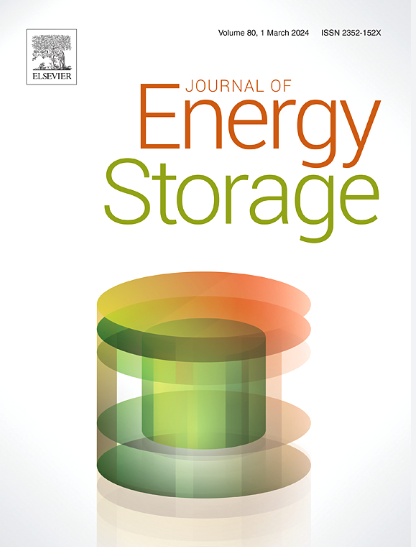超越诊断:当前动力电池故障诊断方法的不足
IF 8.9
2区 工程技术
Q1 ENERGY & FUELS
引用次数: 0
摘要
电池技术的进步、环保意识的增强以及政府的扶持政策推动了电动汽车的普及。然而,热失控是一种灾难性的失效模式,其特征是不可控的温度升高导致火灾或爆炸,仍然是一个重要的安全问题。这项工作首先阐明了热失控的多方面原因,并评估了最先进的检测方法,包括温度和电压监测,并强调了故障诊断算法中机器学习和电化学参数的集成,其次是提高早期预警系统的可靠性和准确性以及实时诊断工具的实际实施方面的挑战。为了加深我们对潜在问题的理解,提出了一个案例分析来阐明故障诊断的关键考虑因素。虽然我们的解释仍然不完整,但希望最终的发现能够提供重要的见解,可以为未来的研究工作提供信息和指导。最后,我们提出了未来研究的途径,重点是鲁棒建模,创新传感器技术,以及对电化学过程的更深入理解,以提高电池的安全性。本文章由计算机程序翻译,如有差异,请以英文原文为准。
Beyond diagnosis: Why current fault diagnosis methods for power batteries fall short
The proliferation of electric vehicles has been catalyzed by advancements in battery technology, heightened environmental awareness, and supportive governmental policies. However, thermal runaway, which is a catastrophic failure mode characterized by an uncontrollable temperature increase leading to fires or explosions, remains a paramount safety issue. This work first elucidates the multifaceted causes of thermal runaway and evaluates state-of-the-art detection methodologies, including temperature and voltage monitoring, and highlights the integration of machine learning and electrochemical parameters in fault diagnosis algorithms, followed by challenges in enhancing the reliability and accuracy of early warning systems and the practical implementation of real-time diagnostic tools. To deepen our comprehension of the underlying issues, a case analysis is presented to elucidates critical considerations for fault diagnosis. While our interpretation remains incomplete, hopefully the resultant findings provide significant insights that may inform and guide future research endeavors. In the end, we propose avenues for future research focused on robust modeling, innovative sensor technology, as well as a deeper understanding of electrochemical processes to enhance battery safety.
求助全文
通过发布文献求助,成功后即可免费获取论文全文。
去求助
来源期刊

Journal of energy storage
Energy-Renewable Energy, Sustainability and the Environment
CiteScore
11.80
自引率
24.50%
发文量
2262
审稿时长
69 days
期刊介绍:
Journal of energy storage focusses on all aspects of energy storage, in particular systems integration, electric grid integration, modelling and analysis, novel energy storage technologies, sizing and management strategies, business models for operation of storage systems and energy storage developments worldwide.
 求助内容:
求助内容: 应助结果提醒方式:
应助结果提醒方式:


